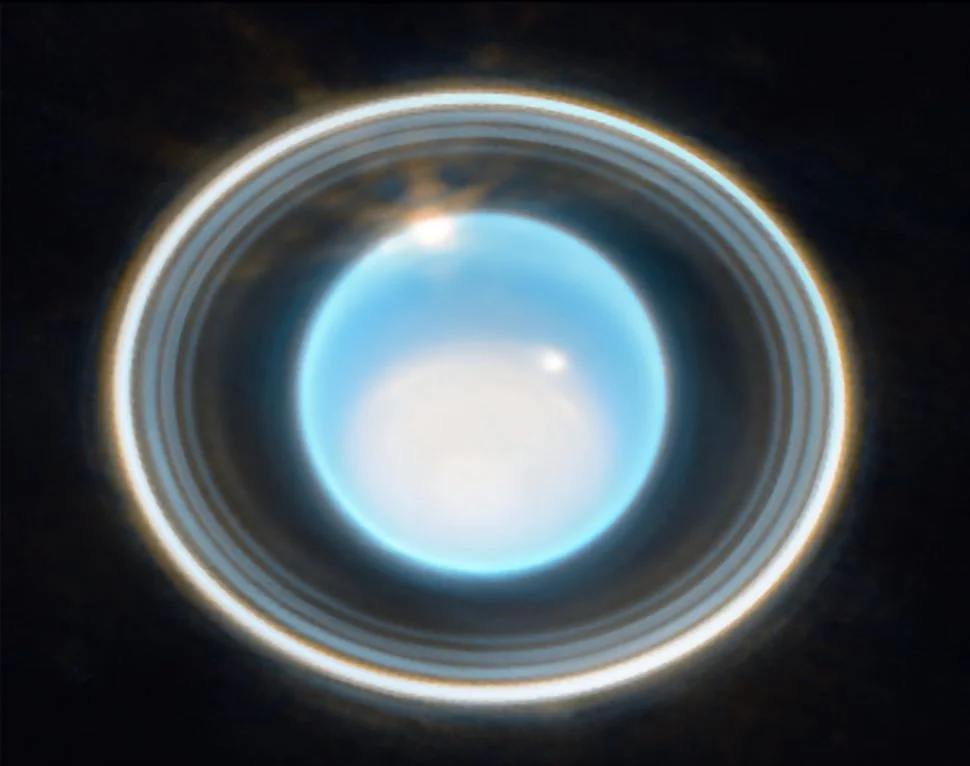Astronomers suspected anomaly in Uranus’ magnetic field
- November 12, 2024
- 0
The extreme tilt and asymmetry of the ice giant’s magnetosphere is still known only from data collected during a NASA probe flyby of Uranus in 1986. Physicists suspected
The extreme tilt and asymmetry of the ice giant’s magnetosphere is still known only from data collected during a NASA probe flyby of Uranus in 1986. Physicists suspected

The extreme tilt and asymmetry of the ice giant’s magnetosphere is still known only from data collected during a NASA probe flyby of Uranus in 1986. Physicists suspected that these data did not show the normal state of the planet, but the result of a temporary phenomenon. The Voyager 2 probe, launched almost simultaneously with its “twin brother” in 1977, flew nearly 80,000 kilometers from Uranus eight years later and collected so much valuable information in a few hours that it is still being studied. One of the most interesting discoveries of that time was the unique magnetic field of this planet.
First, it turns out that Uranus is tilted up to 59 degrees from its rotation axis. On Earth, the magnetic poles do not coincide with the geographical poles, but there is still an exemplary correspondence. Second, the center of Uranus’ magnetic field is also far from its core. According to scientists, this is because it is produced not by the planet’s core, as on Earth, but by layers of electrically conductive material at relatively shallow depths. In the end, it turned out that the composition of the magnetosphere was extremely unusual: there was little of the expected charged plasma in it, and instead the radiation belts were “clogged” with electrons.
Recently, space plasma physics researcher Jamie Jasinski of NASA’s Jet Propulsion Laboratory took another look at this entire picture with colleagues. In a recent journal article Nature AstronomyScientists shared interesting results: according to them, the magnetosphere of Uranus was by no means in its usual state during Voyager’s flyby. Although the probe’s passage occurred during solar minimum, on that particular day Uranus appears to be under increasing attack from the solar wind, the flow of matter particles from our parent star.
For example, researchers found that two days before the flyby, the intensity of the solar wind on the outskirts of Uranus began to increase sharply. When the probe reached the edge of the planet’s magnetosphere (called the magnetopause), it was very low. Physicists suspect that at that moment a sudden solar event “compressed” the ice giant’s magnetosphere, changing its composition and entire configuration. The plasma was temporarily blown away by the solar wind, brought closer to the planet, so the probe did not register it. Observations of the magnetic field of the Earth and other planets show that in this case the upper layers of the magnetosphere begin to fill with lighter particles – electrons.
Scientists also assumed that magnetic field lines are connected under the influence of solar matter. Jamie Jasinski is confident that Voyager would have encountered a completely different picture if it had reached Uranus just a week earlier.
These findings have forced a re-evaluation of both the “inner world” of a distant planet and the chances of finding sub-ice oceans on some of its moons. Since liquid water is a good conductor of electricity, its presence on Uranus’ moons would certainly reveal its magnetosphere.
Voyager data has all but eliminated hope of testing this with Titania and Oberon, but they are considered promising candidates: they are farther away than other large moons, and scientists believed they were near the limits of Uranus’ magnetic field. Physicists have now emphasized that both Titania and Oberon are mostly inside the planet’s magnetosphere, and in 1986 they temporarily found themselves almost outside its “zone”.
Source: Port Altele
As an experienced journalist and author, Mary has been reporting on the latest news and trends for over 5 years. With a passion for uncovering the stories behind the headlines, Mary has earned a reputation as a trusted voice in the world of journalism. Her writing style is insightful, engaging and thought-provoking, as she takes a deep dive into the most pressing issues of our time.